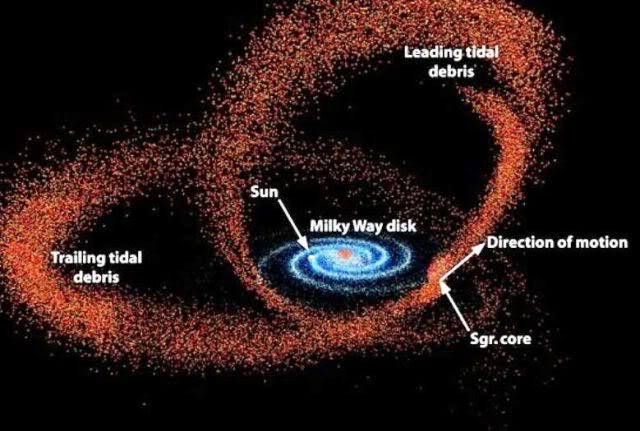This week I heard a fascinating talk about globular clusters, so I wanted to take this opportunity to tell you about globular clusters, and some of the science being done to study and better understand these amazing astronomical objects.
Globular clusters are a type of star cluster, but they're a very special type of star cluster, partly because they're very massive, but also because they're very old, almost as old as the Universe itself. For this reason they provide a glimpse of how stars, and star clusters, formed a long time ago.
Globular clusters are a type of star cluster, but they're a very special type of star cluster, partly because they're very massive, but also because they're very old, almost as old as the Universe itself. For this reason they provide a glimpse of how stars, and star clusters, formed a long time ago.
 |
| The Omega Centauri globular cluster, the largest in our galaxy (Credit: ESO) |
Globular clusters are huge and contain millions of stars, considerably more than other types of star cluster. Although there are no fixed boundaries for the size of a globular cluster, they typically contain between 100 thousand and a few million stars, though there are some even larger than this.
The largest globular cluster in our galaxy is Omega Centauri, which is thought to contain approximately 10 million stars. Though it is quite distant it is relatively bright and can be seen with a pair of binoculars, as can many of the other globular clusters in our galaxy.
In addition to being massive, globular clusters are also very old. The ages of globular clusters can be determined by studying how the stars in the cluster have evolved based on our understanding of stellar evolution (the study of how stars evolve). The globular clusters in our galaxy seem to be about 11-13 Gyr old (1 Gyr = 1000 million years). This is just younger than the approximate age of the Universe, 13.7 Gyr, suggesting globular clusters were some of the first objects to form in the Universe.
 |
| The M80 'Scorpio' globular cluster (Credit: Baran Observatory) |
It is thanks to their old age that globular clusters are so round and spherical. Globular clusters are held together by the mutual gravitational attraction of all the stars in the cluster, and over time this gravitational attraction has smoothed out any small structural differences in the cluster and created an almost perfect ball of stars. In fact globular clusters are really useful for studying how gravity affects clusters of stars, simply because they've been around for so long and have been relatively undisturbed by the galaxy.
The reason globular clusters haven't been disturbed by the galaxy they reside within is because of where within the galaxy globular clusters are found. The oldest stars in our galaxy are found not in the disk of the Milky Way galaxy, but in its halo, which is a spherical and diffuse cloud of stars within which the disk of our galaxy sits. Globular clusters are as old as the oldest stars in our galaxy and are found distributed across the Galactic halo in relative isolation compared to the spiral-shaped disk of the galaxy.
 |
| The structure of our galaxy, showing the globular clusters in the Galactic halo (Credit: University of Oregon) |
Our galaxy contains approximately 150 known globular clusters, with experts suggesting that there may be 10 to 20 still to be discovered. Because of their brightness we can identify globular clusters in other galaxies and some large galaxies have many more globular clusters than the Milky Way, for example the Andromeda Galaxy may have as many as 500 globular clusters!
One of the great mysteries of globular clusters is how they formed, whether they formed in a single burst of star formation or whether they are made up of multiple generations of stars. This also raises the question of whether globular clusters are significantly different from some of the smallest type of galaxy we know of, for example the dwarf spheroidal galaxies. All of these unanswered questions are very important for understanding how stars and galaxies form, which makes globular clusters an important area of astronomical research.


























